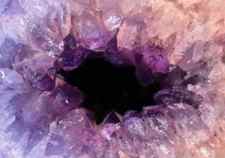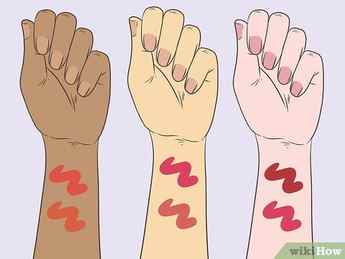Color: Purple, violet, dark purple
Crystal habit: 6-sided prism ending in 6-sided pyramid (typical)
Twinning: Dauphine law, Brazil law, and Japan law
Cleavage: None
Fracture: Conchoidal
Mohs scale hardness: 7–lower in impure varieties
Luster: Vitreous/glassy
Streak: White
Diaphaneity: Transparent to translucent
Specific gravity: 2.65 constant; variable in impure varieties
Amethyst Color: Change in the Color of Amethyst Crystals
Amethyst is a variety of quartz that is colored purple by iron impurities. The color of amethyst can range from light lavender to deep violet, and can even have reddish or bluish hues.
Amethyst crystals can change color due to heat or ultraviolet (UV) radiation. When heated to temperatures above 300 degrees Celsius, amethyst loses its purple color and often turns yellow, orange, or brown. This is because the heat causes the iron impurities in the crystal to change their oxidation state.
Exposure to UV radiation, such as from sunlight or fluorescent lights, can also cause amethyst to lose its color. This is a slower process than heating, but it can eventually cause the crystal to become completely colorless.
It is important to note that not all amethyst crystals will change color in the same way. The color change will depend on the specific iron impurities in the crystal, as well as the temperature and duration of the heat or UV exposure.
| Changes in color of amethyst by heat treatment and UV radiation. Credit: Amir Akhavan |
Change in the Color of Amethyst Crystals
- Heat treatment: When amethyst is heated to between 300 and 500 degrees Celsius, its purple color fades and it may turn yellow, orange, brown, or even colorless. The exact color change depends on the temperature and the duration of heating.
- Radiation: Exposure to high levels of radiation, such as from ultraviolet light or X-rays, can also cause amethyst to lose its color. This is why it is important to store amethyst jewelry and other amethyst crystal items in a cool, dark place.
A part of a deeply colored amethyst geode from Rio Grande Do Sul was cut into four pieces. Three of them were treated with heat or UV radiation. The four pieces were glued together again after treatment.
- Top Left: Untreated, original color. Color seems to be evenly distributed in the tips, but is most intense 1-4 mm under the rhombohedral crystal faces.
- Top Right: Exposed to UV light from two 18W low pressure mercury lamps (germicidal UV-C lamps) for 3 months. The crystals have lost almost all their color, but some slightly violet patches are still visible inside some crystals. Fading proceeds relatively quickly in the beginning, but slows down with time. The complete bleaching would probably have required another 2-3 months of exposure.
- Bottom Left: Heating to about 380°C for 8 hours resulted in loss of most violet color and an overall patchy appearence. Some crystals are still colored violet in central parts while the outmost layers of the rhombohedral faces start to develop a yellow-brown color.
- Bottom Right: Heating to about 450°C for 12 hours. The violet color is gone, and a orange-brown color appears that is most intense close to the surface. Note that the most intense violet color of the untreated crystals is not directly at the surface, but a few millimeters inside the crystals.
Does Amethyst Fade in Sunlight
Yes, amethyst can fade in sunlight. The ultraviolet (UV) rays in sunlight can break down the color centers in the amethyst crystal, causing it to lose its purple color. The longer an amethyst crystal is exposed to sunlight, the more likely it is to fade.
How to Restore Amethyst Color
There is no way to restore the original color of a faded amethyst crystal. However, there are a few things you can do to slow down the fading process:
- Store your amethyst crystals in a cool, dark place.
- Avoid exposing your amethyst crystals to direct sunlight or other sources of ultraviolet light.
- If you must wear your amethyst crystals in sunlight, try to cover them with clothing or wear sunscreen.
- Avoid heating your amethyst crystals.
- Be careful when cleaning your amethyst crystals, as some cleaning products can damage the color.
Purple Amethyst : What causes the purple color of amethyst?

Amethyst is a purple quartz type (SiO2) and owes its violet color to irradiation, iron impurities and, in some cases, other transition metals, and the presence of other trace elements resulting in complex crystal lattice substitutions. The hardness of the stone is the same as quartz, making it ideal for use in jewelry.
Amethyst occurs in primary shades from a light pinkish purple color to a deep purple color. Amethyst may have one or both secondary shades, red and blue. High-quality amethyst can be found in Russia, Sri Lanka, Peru, Uruguay and the Far East. The perfect classification is called “Ultra Siberian” which has a predominant purple hue of around 75–80 per cent, with 15–20 per cent blue which (depending on the light source) red secondary hues. ‘Rose de France’ has a distinctly light shade of purple, reminiscent of a lavender / lila shade. These pale colors were once considered undesirable but have recently become popular as a result of intensive marketing.
How does Amethyst get its color?
The color of amethyst has been shown to result from the substitution of trivalent iron (Fe3 +) for silicon in the structure in the presence of trace elements of a large ion radius and, to a certain extent, the amethyst color can naturally result from the displacement of the transition elements even if the iron concentration is low. Real amethyst is dichroic in reddish violet and blue violet, but when it is hot, it turns yellow-orange, yellow-brown, or dark brownish, and can resemble citrine, but, unlike true citrine, it lacks its dichroic. Amethyst can result in ametrine when partially heated.
Recommended For You The world’s largest Amethyst geode
The color of the amethyst comes from the quartz color centers. They are produced when small amounts of iron are irradiated (from the normal radiation in the rocks).
The purple color of ghost town glass comes from small amounts of manganese in the glass when exposed to ultraviolet light. Manganese was used as a clearing ingredient in glass from 1860 to 1915. Compared to this, lead was used, followed by the use of selenium.
Quartz will commonly contain trace amounts of iron (from 10 to 100 parts per million pieces of iron). Some of this iron is present in sites normally occupied by silicon, and some are interstitial (in sites where the atom is not normally present). The iron is usually at +3 valence.
Gamma ray radiation (from radioactive decay in the underlying rocks) is capable of shaking the electron out of the iron lattice and depositing the electron in the interstitial carbon. This +4 iron absorbs those wavelengths (357 and 545 nanometres) of light producing the colour of the amethyst. You need to get a quartz that contains the right amount of iron and then undergoes sufficiently natural radiation to create the color centers.




